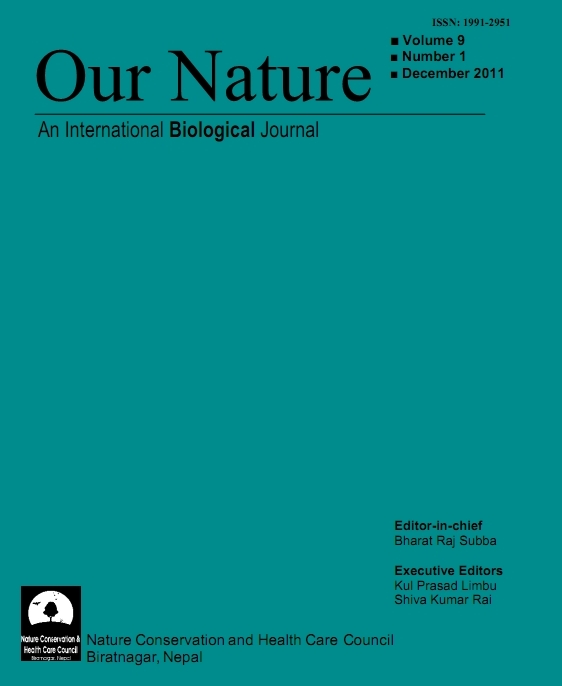Impact of Soil Temperature and Moisture on Soil Respiration under Different Cropping Patterns in Arid Oasis Area
DOI:
https://doi.org/10.3126/on.v9i1.5723Keywords:
CO2 flux, environmental factors, yield and biomass, Q10 valueAbstract
A dynamic chamber method was used to measure soil respiration under four intercropping patterns and five monocropping patterns from April to September, 2009 and 2010. Soil temperature and moisture were measured to analyze correlations to soil respiration. Q10 values varied from 1.23 to 2.18, with minimum value for sole wheat and maximum value for maize//pea; optimum moisture for soil respiration ranging from 0.13 to 0.21m3m-3. Soil respiration of summer harvesting crops (wheat, rape and pea) was more sensitive to moisture while that of autumn harvesting crops (maize and Soyabean) was more to temperature. Ratios of biomass and yield to seasonal CO2 fluxes for sole wheat were 32.6-40.1 kg/kg and 13.2-14.5 kg/kg, respectively, showing wheat was the crop that emitted less CO2 but had good productivity. It was concluded that wheat//maize was recommended cropping pattern considering both lower CO2 fluxes and higher production.
Downloads
Downloads
Published
How to Cite
Issue
Section
License
This license enables reusers to distribute, remix, adapt, and build upon the material in any medium or format for noncommercial purposes only, and only so long as attribution is given to the creator.




